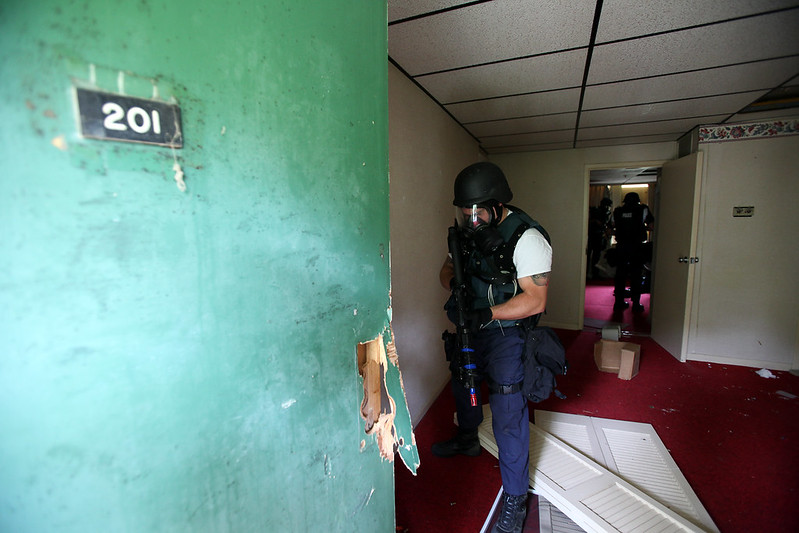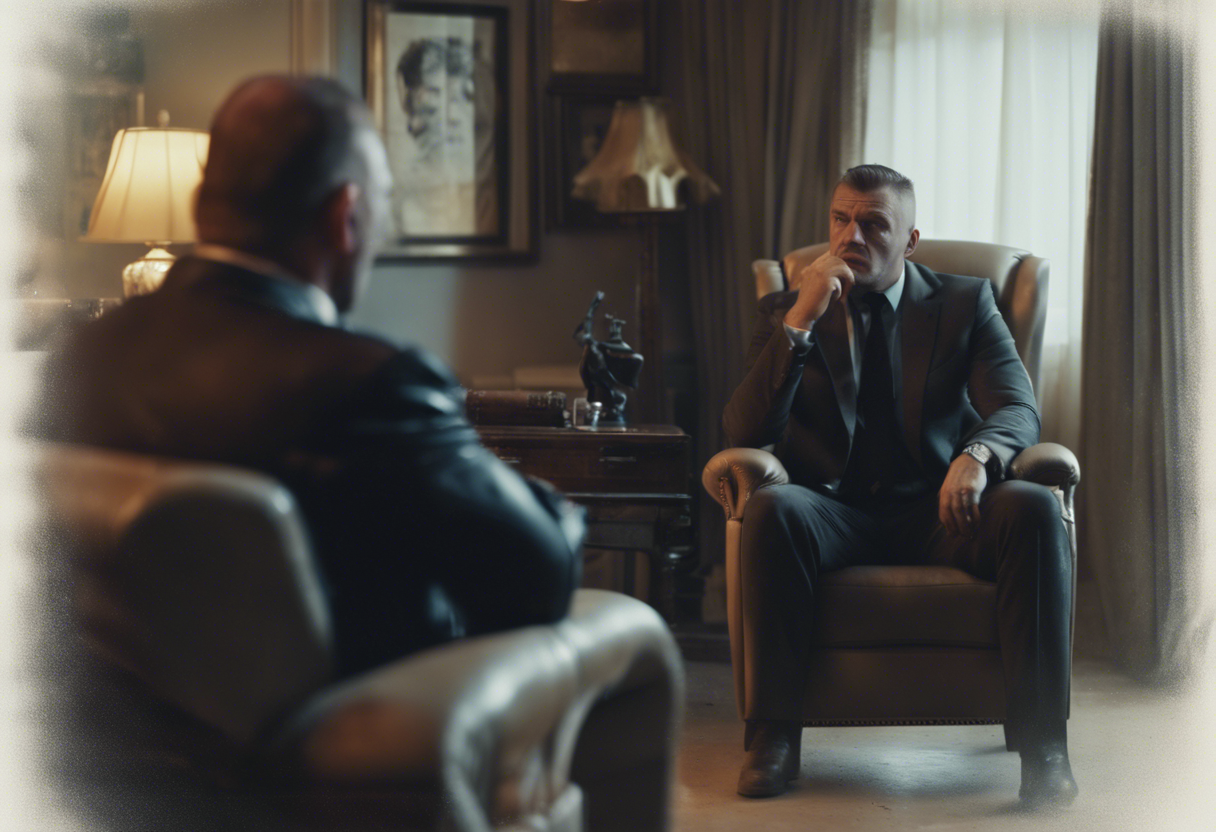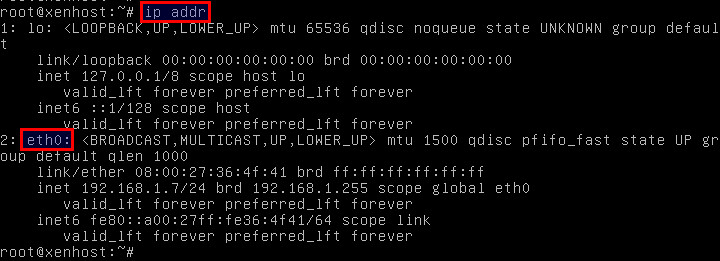This week’s top three summaries: R v Harper, 2024 ONSC 925: s.8 #dynamic entry, R v Walters, 2024 ONSC 978: family law #collusion, and R v Brosseau, 2024 ABKB 106: s.11(b) perpetual #availability.
Our firm focuses on representation in complex criminal trials and criminal appeals. We also provide ghostwriting services to other firms for written submissions. Consider us for your appeal referrals or when you need written submissions on a file.
Our lawyers have been litigating criminal trials and appeals for over 16 years in courtrooms throughout Canada. We can be of assistance to your practice. Whether you are looking for an appeal referral or some help with a complex written argument, our firm may be able to help. Our firm provides the following services available to other lawyers for referrals or contract work:
- Criminal Appeals
- Complex Criminal Litigation
- Ghostwriting Criminal Legal Briefs
Please review the rest of the website to see if our services are right for you.
R v Harper, 2024 ONSC 925
[February 12, 2024] Charter s.8: Manner of Execution of Warrant, Dynamic Entry [Ryan Bell J.]
AUTHOR’S NOTE: Officer safety and destruction of evidence concerns cannot be ever-present or based on assumptions made about a type of offence. Section 8 of the Charter protects all citizens from unreasonable manner of execution of warrants by police. This case shows what happens when police are allowed to simply assume that a drug dealer will be armed and dangerous or might be able to destroy evidence. Such conclusions have to be made on the basis of evidence on reasonable grounds. Police cannot proceed on an assumption that "there is always a risk of firearms in the search of premises alleged to be associated with drug trafficking".
Overview
[1] Mitchell Harper is charged with possession of cocaine, crystal methamphetamine, and hydromorphone, for the purpose of trafficking, contrary to s. 5(2) of the Controlled Drugs and Substances Act, S.C. 1996, c. 19. He is also charged with possession of the proceeds of crime over $5,000, contrary to s. 355(a) of the Criminal Code. At the outset of trial, the Crown advised that it was proceeding on only one count in relation to hydromorphone and that it was therefore withdrawing count 4 on the indictment.
[2] On May 29, 2020, members of the Ottawa Police Service entered Mr. Harper’s residence located at 1123 Secord Avenue, Ottawa by means of a mechanical breach and dynamic entry. The police seized drugs and other items from Mr. Harper’s bedroom including, 340.5 grams of cocaine,270.1 grams of crystal methamphetamine, 74 pills of hydromorphone, and 11,127.8 grams of phenacetin. The police also seized $23,880 in Canadian currency.
[3] Mr. Harper does not challenge the s. 11 CDSA search warrant pursuant to which the search was conducted. Mr. Harper does allege, however, that the search was not conducted in a reasonable manner. Specifically, he submits that the dynamic entry was not justified and breached his s. 8 Charter right to be secure against unreasonable search or seizure. He submits that the evidence obtained as a result of the search should be excluded from evidence under s. 24(2) of the Charter.
Did the OPS breach Mr. Harper’s s. 8 Charter right?
(i) Legal principles
[20] Section 8 of the Charter states: “Everyone has the right to be secure against unreasonable search or seizure.”
[21] To be reasonable under s. 8 of the Charter, a search must be authorized by law, the authorizing law must itself be reasonable, and the search must be conducted in a reasonable manner: R. v. Collins, [1987] 1 S.C.R. 265 at 278.
[22] A search that is based on a valid authorization may be deemed invalid if the search itself is executed in an unreasonable manner: R. v. T.G.H., 2014 ONCA 460, at para. 45.
[23] Except in exigent circumstances, police officers must make an announcement before forcing entry into a dwelling house. In the ordinary case, they should give (i) notice of presence by knocking or ringing the doorbell, (ii) notice of authority, by identifying themselves as law enforcement officers, and (iii) notice of purpose, by stating a lawful reason for entry: Eccles v. Bourque, [1975] 2 S.C.R. 739 at 747. The knock and announce rule has been part of our law for over 400 years: R. v. Pan, 2012 ONCA 581, at para. 35. As Dickson J., as he then was, explained in Eccles,
An unexpected intrusion of a man’s property can give rise to violent incidents. It is in the interests of the personal safety of the householder and the police as well as respect for the privacy of the individual that the law requires, prior to entrance for search or arrest, that a police officer identify himself and request admittance.
[24] Where the police depart from the knock and announce rule, there is an onus on them to explain the necessity for such an approach: R. v. Cornell, 2010 SCC 31, at para. 20. As the Supreme Court explained in Cornell, at para. 20:
If challenged, the Crown must lay an evidentiary framework to support the conclusion that the police had reasonable grounds to be concerned about the possibility of harm to themselves or occupants, or about the destruction of evidence. The greater the departure from the principles of announced entry, the heavier the onus on the police to justify their approach. The evidence to justify such behaviour must be apparent in the record and available to the police at the time they acted. The Crown cannot rely on ex post facto justifications.
[25] At the same time, s. 8 of the Charter “does not require the police to put their lives or safety on the line if there is even a low risk of weapons being present”: Cornell, at para. 20. Public safety (including the safety of police officers) and the prevention of destruction of evidence may relieve the police of the knock and announce standard: R. v. Pileggi (2021), 153 O.R. (3d) 561 (C.A.), at para. 23.
[26] In determining whether the police had reasonable grounds for concern to justify a departure from the knock and announce approach, the court must assess the decision of the police to act as they did, bearing in mind (i) that the decision of the police must be judged by what was or should reasonably have been known to them at the time, not in light of how things turned out to be, and (ii) the police must be allowed a certain amount of latitude in the manner in which they decide to enter premises: Cornell, at paras. 22-24. “[The police] cannot be expected to measure in advance with nuanced precision the amount of force the situation will require”: Cornell, at para. 24, citing R. v. Asante-Mensah, 2003 SCC 38, at para. 73.
(ii) The principles applied to the evidence in this case
[27] The manner of execution of the search warrant for 1123 Secord Avenue was a significant departure from the principles of announced entry. The police therefore bear a heavy onus to justify their approach.
[28] The Crown advanced both the destruction of evidence and officer and occupant safety as justifications to depart from the knock and announce approach. The officers testified as to the disposability of cocaine and crack cocaine and the close connection between drug trafficking, guns, and violence.
[29] While I accept that the police are able to rely on their collective experience when assessing potential risks that may endanger their lives, and that a dynamic entry may be warranted to preserve evidence or for reasons of safety, there was no evidence that these potential risks were considered and assessed in the circumstances of this case. The evidence uniformly pointed to a dynamic entry being the plan; the evidence does not show that any other possibilities were considered.
[30] It is clear from the testimony of Duty Inspector Burnett that the possibility that a child might be present at the residence impacts on the plan and any departure from the knock and announce approach. Duty Inspector Burnett assumed that alternatives had already been considered by the time he was presented with the proposed tactical plan. He also testified that if he had been told it was possible a young girl was in the residence, he would have wanted more solid information – in other words, there would have been further discussion about the execution of the search warrant in these particular circumstances. That did not happen.
[31] The SMEAC document did not contain any information about a specific threat of weapons or violence. The totality of the evidence does not support a finding that Detective Renwick mentioned the possible presence of a firearm at the tactical briefing. The same is true regarding the possible presence of a young child at the residence: although identified by a number of the officers as a hazard, this was not a matter discussed or even raised at the tactical briefing.
[32] Sergeant Dehartog’s evidence is of little assistance. He did not have an independent recollection of the questions he was asked by Duty Inspector Burnett about the proposed tactical plan. Sergeant Dehartog had no independent recollection of specific alternatives he considered and, while he agreed with the need to justify departures from the knock and announce standard, he did not document any justifications in this case. He testified that, based on his experience, there is always a risk of firearms in the search of premises alleged to be associated with drug trafficking, and “if I’m assuming there’s a firearm I’m not knocking.” The inescapable conclusion is that this officer – the officer whose job it was to develop the tactical plan and recommend it to the duty inspector for approval – operated from an assumption that a dynamic entry is justified any time when drug trafficking is alleged. That is not the law. [Emphasis by PJM]
[33] I would add that the possibility that Mr. Harper could have disposed of evidence cannot, on its own and without consideration of the specifics of the case, justify the use of dynamic entry because “to support such a position would permit dynamic entry any time drugs are alleged to be present”: R. v. Ruiz , 2018 ONSC 5452, at para. 51.
[34] It is important to reiterate the words of the Court of Appeal in Pileggi, at para. 36:
The fact that the police act in the same way in the vast majority of cases presenting similar circumstances does not equate with the existence of a blanket policy. There is no impropriety in the police drawing on their collective experience when performing the same investigative task so long as they remain open to performing their duties differently should circumstances permit.
[35] In Pileggi, the Court of Appeal upheld the trial judge’s analysis that the police had reasonable grounds to conclude that an unannounced and forced entry was required to prevent the destruction of evidence, noting that given the size and layout of the house and the nature of the drugs in question, there was a “real likelihood that the appellant would be able to destroy the evidence quickly and with ease.” (at para. 32)
[36] The Court of Appeal in Pileggi also agreed with the trial judge that safety concerns also justified the officers’ forced entry. The Crown relies in particular on para. 34 of Pileggi, where the Court observed that, although there was no information available to the officers suggesting there were firearms located at the appellant’s residence, the allegations involved serious drug charges and “[t]he all too typical toxic combination of drugs and guns is well known to the police and the courts.”
[37] It is important to note, however, that in Pileggi , there was evidence that the officers made an individualized assessment about the appropriate manner of search. (at paras. 37-38) That is not the case in the matter before me.
[38] The Crown also relies on R. v. Afghan-Yaqubi, an unreported decision of the Ontario Court of Justice, dated November 29, 2022, where the court found that the decision by the police to use a dynamic entry did not run afoul of s. 8 of the Charter. In that case, too, there was evidence that alternatives were considered. At para. 39, the court noted that police assembled detailed plans for the warrant executions and “considered multiple factors and were prepared to consider other alternatives.” In this case, there is no evidence that the police were prepared to consider other alternatives.
[39] Finally, the Crown suggests that when Sergeant Dehartog realized Mr. Harper had seen the tactical unit approaching, Sergeant Dehartog was forced to make a “split second” decision that a dynamic entry was not only the most appropriate means of executing the warrant but was necessary to protect everyone’s safety and to prevent the destruction of evidence. I reject this argument for the simple reason that it does not accord with the evidence. When asked whether he believed Mr. Harper had seen him, Sergeant Dehartog candidly stated, “I don’t recall to be honest.”
[40] In these circumstances, I find the Crown has not met its evidentiary burden of justifying the decision by the OPS to employ a dynamic entry. The search of Mr. Harper’s residence at 1123 Secord Avenue on May 29, 2020 was executed unreasonably and violated Mr. Harper’s right under s. 8 of the Charter.
[62] In the circumstances of this case, the cumulative weight of the first two lines of inquiry strongly points toward exclusion of the evidence. While society has a significant interest in an adjudication on the merits and the evidence seized is reliable and crucial, the seriousness of the police misconduct in this case requires the court to dissociate itself from that conduct by excluding the evidence so as to preserve public confidence in and ensure state adherence to the rule of law. Failure to exclude the evidence seized would, in my view, bring the administration of justice into disrepute.
[63] I therefore conclude that the impugned evidence seized from 1123 Secord Avenue must be excluded under s. 24(2) of the Charter.
Conclusion
[64] Without the evidence obtained in the search, the Crown has no case against Mr. Harper. Accordingly, acquittals will be entered on counts 1,2,3, and 5 on the indictment, and count 4 marked as withdrawn.
R v Walters, 2024 ONSC 978
[February 14, 2024] Credibility of Complainants: Family Law, Collusion, Complainant Animus [D.E. Harris J.]
AUTHOR’S NOTE: This case provides a good example of family law matters infecting allegations of crimes by some of the family. Unlike sexual assault matters, complaints of assaults and similar conduct can include considerations of timing of the complaint to the police. Here, that timing was suspiciously late and close to matters coming up in family court. More over, there was not prior reporting or discussion with the family of the issues. This, was a factor suggesting collusion was a possibility because it was simply so unbelievable that none of the three family alleged victims would have told the other of their experiences with the accused until years later when family proceedings were engaged.
[1] A dark and unflattering portrait of a family in total dissolution was on display in this trial. Ms. Walters, the mother of the family, faces criminal accusations from her other family members.
[2] The complainants in the three counts on the indictment are Ms. Walter’s oldest daughter Paige Foster, her younger daughter Madison Foster and her husband Donovan Foster. Madison, now 18, alleges that her mother slapped her face in a car in August of 2021 (count 1). Paige, 24 years of age, testified to being choked at age eight, being struck by a purse in the face when nine years old and being hit with the back of a hand in the face while 12-13 (Count 2). Donovan Foster, Ms. Walter’s husband, alleges that around 2014- 2015, she kicked him while in bed and then, after he pushed her, she pulled some of his hair out (Count 3). Ms. Walters testified in her own defence and denied the allegations.
[3] The evidence shows that the marriage between Ms. Walters and Mr. Foster was in serious trouble from at least 2010. After much tribulation, on July 1, 2019, Ms. Walters announced that she was separating from Mr. Foster. The family proceedings mushroomed from there. Mr. Foster filed a Form 8 family law application in October of 2023. He sought a divorce, child support for Madison, Section 7 expenses for Madison, and equalization, amongst other things. There is a good deal at stake in those proceedings. There is plenty of acrimony to go around. The two complainants, Paige and Madison, side with their father against their mother.
[7] It is with good reason that it has been often acknowledged that criminal proceedings are susceptible to improper use to up the ante and manipulate family law proceedings to a complainant’s advantage: see e.g. Shaw v. Shaw, 2008 ONCJ 130, [2008] O.J. No. 1111 at para. 5 (Ont. C.J.); Gonzalez v. Trobradovic, 2014 ONSC 2468 (Ont. S.C.J.) at paras. 32- 35. As I said in a recent decision explaining the need for a mistrial, albeit in the context of an intimate partner sexual assault case, (R v. A.G.), 2023 ONSC 6038, currently unreported),
[17] Motive to fabricate when a marriage is in breakdown mode is a central issue in many cases of sexual assault against an intimate partner. The anger and frustration of a family breakdown has been known to lead on occasion to criminal allegations that later prove false. To allege criminal misconduct is a strong temptation in the heat of family litigation. Criminal allegations serve as one of the most powerful weapons to gain leverage against the spouse: see e.g. Shaw v. Shaw 2008 ONCJ 130, [2008] O.J. No. 1111 (Ont. C.J.) at para. 5. In my judicial experience, this is a relatively common theme. And it was prominent on the evidence in this case.
[8] In the case at hand, given that all three complainants were embroiled in the family law proceedings between their mother and father, viewed along with the other evidence in the case, there was an obvious and powerful motive apparent to falsify allegations of criminal conduct.
[10] It is critical to keep in mind with reference to the absence of confirmation for the three complainants’ evidence the words of Justice Fish in R. v. Khela, 2009 SCC 4, [2009] 1 SCR 104,
1 Legal systems far separated in time and place have long recognized that it is dangerous to rest a criminal conviction on the testimony of a single witness, or on a single piece of evidence. This concern is at least as old as Deuteronomy. It arises because witnesses can lie deliberately or mislead inadvertently, documents can be forged, and other items of evidence can be tampered with or planted: P. Roberts and A. Zuckerman, Criminal Evidence (2004), at p. 466.
2 The evidence of a single witness is nevertheless sufficient in Canada to support a conviction for any offense other than treason, perjury or procuring a feigned marriage. Many serious crimes might otherwise go unpunished. But where the guilt of the accused is made to rest exclusively or substantially on the testimony of a single witness of doubtful credit or veracity, the danger of a wrongful conviction is particularly acute. (Footnote omitted)
[11] That is particularly apropos in this case in which there is no confirmation for any of the three counts and the motive to fabricate is palpable.
[13] There are innumerable problems with Madison’s evidence. She said in her statement to the police that the cheque that was being deposited at the credit union was from her work income but she admitted on the stand in this trial that this was knowingly false. It was a COVID credit cheque. No explanation was tendered for why she was dishonest in this regard. But that she was, whether for any specific reason or gratuitously, constitutes a major blow against her credibility.
[14] Furthermore, Madison’s account with respect to the slap, the gravamen of the offence, was poor and unreliable. She was unsure whether the slap was backhanded or with the palm of the hand. In an attempt to justify this lack of certainty, she testified that her eyes were closed at the time. Her evidence with respect to where the impact was on her face vacillated, although she seemed to settle on it being on the right side of her face even though the left side of her face would have been closest to her mother.
[15] The more serious problem which suffuses her evidence is the bile and hatred she harbours for her mother. It was not disguised in any way; indeed, it was flaunted with pride.. It was of undiluted virulence. In cross-examination, she did not miss any opportunity, no matter how slight or fleeting, to slag her mother’s character. Within every answer, quite literally, she managed to express outright contempt for her mother. The majority of these answers were unresponsive to the question that was asked. For example, when some of the good things her mother did for her were put to her, she inevitably answered that they were done “forcefully”.
[16] For Madison, the vitriol against her mother was a point of pride. She went so far as to slip in discreditable conduct evidence that had been previously ruled inadmissible and that she had been instructed by the Crown Attorney not to talk about in evidence. That was dishonest and speaks very poorly of her veracity. Madison’s attacks on her mother were an unvarnished character assassination.
[18] Madison’s evidence was so concerning that even Mr. McCann, in a moment of clarity and good judgment, seemed to agree that her evidence, due to her open hatred, was weak. Yet he never formally withdrew his request that Ms. Walters be found guilty of this count. In my view, to find anything Madison said against her mother as plausible let alone proven would be unreasonable and unsafe. I have no hesitation whatsoever in rejecting her evidence in its entirety and with it the evidence that she was slapped by her mother. In my view, it is likely that she lied about the slap in her evidence before the court.
[19] On the other hand, with reference to count 2, Paige Foster was a composed, wellspoken witness. But there were problems with her evidence too. She testified that she was choked at age eight by her mother to the point that she could not breathe. The motive for the attack was that Paige had received a C+ on a school test. In her police statement she said that she fell to the floor. But in her testimony, she added that her mother jumped on top of her when she was on the floor, straddled her, and continued to choke her but even harder now. Although Mr. McCann disputed that there was a discrepancy, he was clearly wrong. This additional allegation cast some negative impact on Paige’s reliability and, to a lesser extent, her credibility.
[20] The second incident occurred when she was about 9 years old. She had lost a library book and, out of anger, Ms. Walters used a purse to hit her. Paige alleged that the purse left a cut under her left eye. There were also three lines on her neck from Ms. Walter’s nails, when she held Paige up against the wall. Paige testified that she went to the bathroom to wash off the blood. She changed her shirt. Paige testified that she wore a turtleneck for a whole week to conceal the marks. She also testified that the cut under her eye scabbed over.
[21] There are several insurmountable problems for the Crown with respect to this allegation. First, Paige testified that her brother Christopher Gayle, a young adult at the time, was present for this incident and removed Ms. Walters from Paige. Christopher testified for the defence and said the incident did not happen. Furthermore, Mr. Foster, the father of the family and complainant on count 3, was living in the family home with Paige, Madison, Christopher and Ms. Walters. He did not see any marks or the scab under the eye. Nor did Christopher for that matter. The scab in the soft tissue under the eye would have taken at least one week to heal, if not two weeks. Mr. Foster worked long hours but in my view, if the injuries had occurred, he most certainly would have seen them at some point. This was a conspicuous injury.
[22] The third incident allegedly occurred when Ms. Walters picked Paige up from swimming. Paige was 12-13 years old. Ms. Walters was late and Paige testified that they were both irritated. When she got in the car, Ms. Walters backhanded her. Ms. Walters ring “busted” her lip. It was Paige’s evidence that the ring was a wedding ring usually worn on the left hand. She speculated that the ring had been switched to the right hand specifically to inflict extra damage to her face. I would note in passing that I find it questionable that her mother would have harboured such premeditated malice....
[23] With respect to count 3, Mr. Foster testified that a year and a half after his back surgery to repair car accident injuries, in about 2014-2015, he and Ms. Walters were in bed. They had been arguing about a trip he was to make the next morning to take his other daughter to school in the United States. According to him, Ms. Walters got angry and, as his back was turned to her in the bed, kicked him in in the area where his stitches had been. They got out of bed and faced each other. He pushed her and she then pulled his dreadlocks.
[24]... It is noteworthy that none of the three complainants reported the assaults to each other nor to the police for many years with the exception of Madison. The situation is different than failing to complain about sexual assaults. In the area of sexual assault, the law has recognized long ago that the lack of timely complaint is often misunderstood and overvalued: R. v. D.D., 2000 SCC 43, [2000] 2 S.C.R. 275. It is frequently appropriately explained away in an interfamilial context by a dependence on the accused and\or profound emotional confusion arising from the trauma. [PJM Emphasis Added]
[25] In this case, Paige was between 8 and 13 years of age when she was assaulted by her mother. She never complained to her father who lived with them. Her explanation that she was told not to by Ms. Walters should be viewed skeptically. Mr. Foster did not complain to anyone for many years. All three gave police statements virtually simultaneously in early November, 2021, in the midst of the family law imbroglio. That timing is very suspicious. [Emphasis by PJM]
[26] Mr. McCann for the Crown aggressively attacked any idea that there had been collusion between Mr. Foster and his daughters against their wife and mother, Ms. Walters....
[27] Discussion of collusion most often finds its way into the caselaw in the context of similar fact evidence. The Supreme Court in R. v. Handy 2002 SCC 56, [2002] 2 S.C.R. 908 held that collusion can destroy the very rationale for admission of similar fact evidence: paras. 104-110. An “air of reality” to collusion will shift the onus to the Crown to demonstrate that the similar act evidence is not actually tainted by collusion: para. 112. That is not our situation in this case. However, it is relevant that in Handy, Justice Binnie held that there was some evidence of actual collusion, saying (para. 111),
The ex-wife acknowledged that she had told the complainant of the $16,500 she received from the Criminal Injuries Compensation Board on the basis, she agreed, that "[a]ll you had to do was say that you were abused". A few days later the complainant, armed with this information, meets the respondent and goes off with him to have sex in a motel room.
[28] In a judge alone case in which there is no similar fact aspect, there is no need to argue collusion on the air of reality standard. Its set the bar too high and is unnecessary. The real issue is actual collusion. It may be that Mr. McCann argued that there was no air of reality to collusion as a rhetorical device to emphasize and gather force behind his submission. He argued, in effect, that there was nothing approaching collusion. In other words, if this were a jury case, Mr. McCann would have been adamantly opposed to leaving the issue of collusion to be considered by the jury.
[29] In my view, the argument that there is no air of reality to collusion was so devoid of merit as to be manifestly frivolous. Indeed, not only was there an air of reality to collusion, there was clear evidence of actual collusion. The defence need not of course prove collusion as that would infringe the burden of proof and the presumption of innocence: see by analogy R. v. Bartholomew, 2019 ONCA 377. But the evidence of likely collusion on this record was overwhelming.
[30] The collusion in this case certainly measures up well with that found to be present by Binnie J. in Handy. The three complainants were all nuclear family members and very close. There was ongoing family litigation in which there was a lot at stake. Not only was there the issue of equalization and the financial implications that go with it but custody and child support of Madison was potentially a live issue as well. All three teamed up against Ms. Walters. Madison’s anger against her mother was unbridled and could not be restrained even in court. It was very likely to have influenced her sister and father. Paige admitted that she was angry with her mother. Moreover, Paige admitted saying that she wanted to ensure her mother, a teacher of children, would no longer be with children and should lose her job. She was clearly vindictive. All three of the complainants complained at the same time to the police. There was evidence that there was a video call amongst them immediately before they complained. Paige admitted discussing the allegations with her father and sister. And all of the complaints except for Madison’s were made years after the supposed incidents.
[31]....I find that there is a likelihood of collusion between the complainants in this case.
[32] In the final analysis, looking at the three counts on the indictment, Mr. McCann was unable to articulate in any reasoned fashion why I should accept and prefer the unconfirmed and flawed evidence of the complainants over that of Ms. Walters. Of course, his burden was much greater than this; he had to explain why I should accept their evidence beyond a reasonable doubt. Their evidence was unconfirmed and marred by animus, motive to fabricate and collusion. In addition, there were the significant credibility and reliability issues as mentioned above with respect to each of them.
[33] Even before looking to Ms. Walter’s evidence, the Crown has fallen far short of proving guilt beyond a reasonable doubt on the three counts in the indictment. I must be “sure” of guilt. But I am very far from sure.
[36] In conclusion, for these reasons, Ms. Walters is found not guilty on the three counts before the court. The indictment will be endorsed accordingly.
R v Brosseau, 2024 ABKB 106
[February 23, 2024] Charter s.11(b): Perpetual Availability of Defence Counsel is Not Required [James T. Neilson J.]
AUTHOR’S NOTE: Within the Jordan framework, once the matter goes over the presumptive ceiling, for delay to be subtracted from the number as "defence delay" that delay has be caused ONLY by the defence. Combining this with the prior case law about defence not having to be in a perpetual state of availability yields the result in this case. Even where defence unavailability contributes to putting a matter over the Jordan timelines, that does not mean that all the time following defence unavailability falls at the feet of the defence as defence delay, particularly where defence had earlier availability that did not match the Crown and court.
[1] The Defendants, David Smith and Jaime Brosseau, make application for a stay of the proceedings against them due to delay, which infringes their right to be tried within a reasonable period of time as guaranteed by section 11 (b) of the Charter of Rights and Freedoms.
Analysis:
[37] The governing authority regarding delay is R. v. Jordan, 2016 SCC 27.
[38] In this case, the total delay from September 1, 2021, when the information was sworn to the anticipated last date of the scheduled trial, April 4, 2024, is 31 months and 3 days, beyond the presumptive ceiling of 30 months, minus any defence delay.
[39] The Crown submits that as the first trial dates offered, December 5 to 15, 2023 were available for the Crown but not for the Defence, then the resulting delay to April 4, 2024, of 3 months and 18 days ought to be attributable to the Defence. This would reduce the total delay that could be attributable to the Crown to less than the presumptive ceiling of 30 months.
[40] In oral submissions, Counsel for Brosseau cited the decision of the Supreme Court of Canada in R. v Hanan, 2023 SCC at paragraph 9, as follows:
(9) Like the majority and the dissent below, we reject the Crown’s proposed “bright-line” rule according to which all of the delay until the next available date following defence counsel’s rejection of a date offered by the court must be characterized as defence delay. We agree with van Rensburg J.A. and Tulloch J.A., as he then was, at para. 56, that this approach is inconsistent with this Court’s understanding of defence delay. Defence delay comprises “delays caused solely or directly by the defence’s conduct” or “delays waived by the defence” (Jordan, at para. 66). Furthermore, “periods of time during which the court and the Crown are unavailable will not constitute defence delay, even if defence counsel is also unavailable” (para. 64). All relevant circumstances should be considered to determine how delay should be apportioned among the participants (R. v. Boulanger, 2022 SCC 2, at para. 8). We share the view of the majority and dissenting judges in the Court of Appeal that, in the circumstances of this case, it is unfair and unreasonable to characterize the entire period between June and October 2019 as defence delay (paras. 59 and 136).
[42] Counsel for the Defendants submitted that they had taken steps to expedite the proceedings including:
a. Entry of election on the first appearance after preliminary disclosure was received;
b. Seeking to set a trial date on the first appearance in Court of King’s Bench.
[44] As the Supreme Court stated in Hanan, defence delay comprises “delay that is caused solely or directly by the defence’s conduct” or “delays waived by the defence”.
[45] In this case, there had been no waivers by the Defence for any delay. There was no delay occasioned when Brosseau retained new counsel on July 4, 2023, as Mr. Wegener confirmed that he was available for the scheduled trial dates, March 18-April 4, 2024.
[46] As for defence conduct, the court must consider all relevant circumstances including the communications between Crown and Defence counsel in the period of December 5, 2022 to February 13, 2023, and their efforts to schedule trial dates as well as the dates for any preliminary applications. I find that beginning in December 2022 and leading up to the agreement for the scheduled trial dates, counsel were engaged in a timely and concerted effort to settle on those dates. On some of the dates proposed by the court, defence counsel were not available because of other scheduled trials. There were other dates where Crown or the Court would not be available including proposed dates for preliminary applications to take place before the trial itself.
[47] Defence counsel then proposed that the trial dates set to begin March 15, 2024, could be preserved, if a further 2 days were added to accommodate pretrial applications in the same period. The Crown agreed to this proposal, suggesting a further 3 days be added. This was done, leaving the trial dates currently set for March 15-April 4, 2024.
[48] As for defence availability, counsel cited the case of R. v Godin 2009 SCC 26 at paragraph 23:
Scheduling requires reasonable availability and reasonable cooperation; it does not, for s. 11(b) purposes, required defence counsel to hold themselves in a state of perpetual availability.
[49] It is clear in examining the defence conduct, there was no attempt to derail these proceedings. Counsel informed the Crown promptly of any scheduling conflicts with proposed dates, which were legitimate. I decline to ascribe any delay to defence conduct. The overall delay is above the 30-month presumptive ceiling. The Crown has not demonstrated exceptional circumstances justifying delay beyond the 30-month ceiling. Therefore, I find that the delay in this case violates the rights of the Defendants under section 11(b) of the Charter , and therefore, these proceedings are stayed pursuant to section 24(1) of the Charter .
Our lawyers have been litigating criminal trials and appeals for over 16 years in courtrooms throughout Canada. We can be of assistance to your practice. Whether you are looking for an appeal referral or some help with a complex written argument, our firm may be able to help. Our firm provides the following services available to other lawyers for referrals or contract work:
- Criminal Appeals
- Complex Criminal Litigation
- Ghostwriting Criminal Legal Briefs
Please review the rest of the website to see if our services are right for you.







